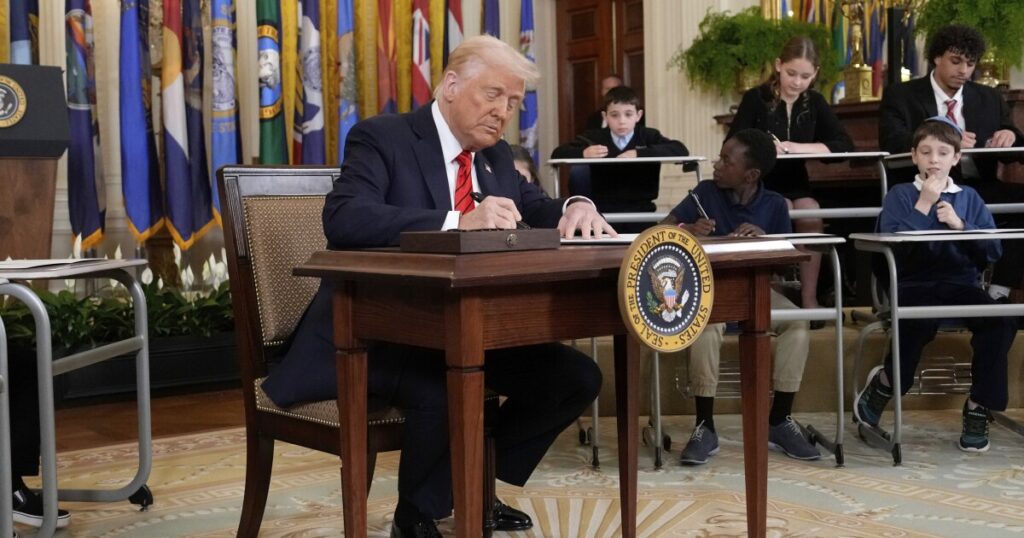In a bold move that has stirred nationwide debate, President Donald Trump has signed an executive order aimed at dismantling the U.S. Education Department. This action aligns with long-held conservative views and campaign promises but faces significant challenges ahead.
The executive order, while ambitious, faces the hurdle of requiring Congressional approval to completely dismantle the department, which was established in 1979. Nevertheless, Republicans have expressed intentions to introduce legislation supporting the closure.
Despite the order’s intent, the Education Department is not expected to close entirely. The White House has clarified that essential functions will remain, including Title I funding for underprivileged schools, Pell grants, and aid for children with disabilities. Federal student loan management will also be preserved.
President Trump criticized the department, stating, “It’s doing us no good,” attributing it to America’s educational shortcomings, and asserted that states could better manage education.
Already, the department has seen significant reductions. The workforce is being cut in half, and major reductions have occurred in both the Office for Civil Rights and the Institute of Education Sciences.
Concerns have been raised by Michigan education officials and public school advocates nationwide, who fear that dismantling the department could exacerbate existing inequalities in the education system.
Michael Rice, Michigan Superintendent of Public Instruction, voiced skepticism about the department’s potential closure: “At the end of the day, I do not believe the U.S. Department of Education will be shuttered. Congress and the American people will not allow it.”
NAACP President Derrick Johnson described the executive order as “a dark day for the millions of American children who depend on federal funding for a quality education.”
Democratic leaders, including Representative Rashida Tlaib, have signaled intentions to challenge the order legally, arguing it is unconstitutional and harmful to students across the nation.
Supporters of the order, however, see it as an opportunity to reduce federal oversight and empower local control. Co-founder of Moms for Liberty, Tiffany Justice, stated on social media, “No more bloated bureaucracy dictating what kids learn or stifling innovation with red tape.”
As the debate unfolds, the specific functions that might be transferred or eliminated remain unclear. The department oversees a substantial amount of federal funding and student loan management, which are crucial components of its operations.
While federal funding constitutes only about 14% of public school budgets, it plays a critical role in supporting vulnerable student programs. Colleges and universities also heavily rely on federal financial aid and research grants.
The idea of closing the Education Department has been a conservative talking point for decades, often framed as a means to reduce federal intervention in state education matters. Yet, achieving this goal remains a contentious and complex issue.





